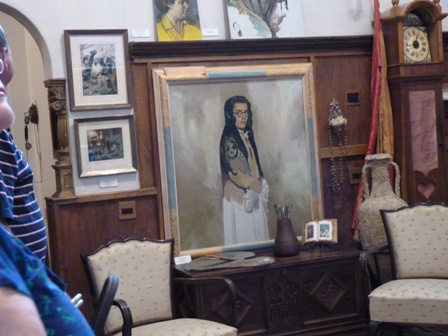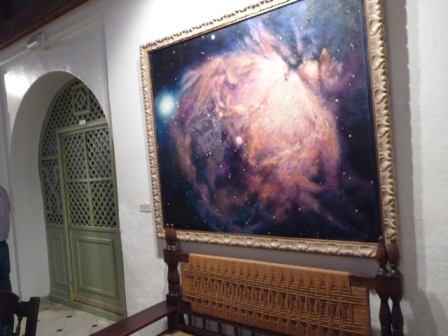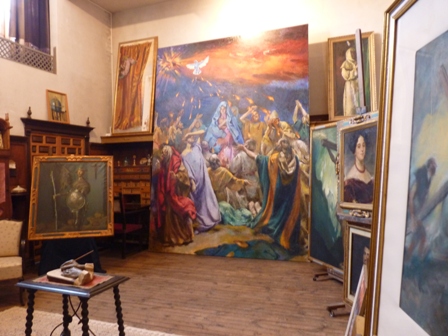1885 was not a great year in Valencian history, being the year of the worst cholera epidemic, one of many, to decimate the population. And yet it was the fate of José Segrelles to be born that year on the 18th March in Albaida.

Valencia’s most famous painter Joaquin Sorolla was also marked by cholera, having lost both parents in the outbreak 20 years earlier in 1865, and it was Sorolla who would be one of Segrelles’ teachers at the San Carlos Academy of Fine Arts, when he moved there at the tender age of nine to learn the craft, accompanied by his older brother Vicente.
Three years later tragedy struck the family with the death of Vicente, which led to José’s departure for Barcelona to live with his uncle Antonio.
Segrelles belonged to a new generation of painters, interested in technology, and while finishing his Art degree he also worked at the Napoleon photography shop and the Granada publishing house as an illustrator.
In 1918 Segrelles had an exhibition in Barcelona, which was visited by Valencian author Blasco Ibañez, who was so impressed by him that he commissioned artwork for his works “La catedral” (‘The Cathedral’), “El intruso” (‘The Intruder’), “Los muertos mandan” (‘The dead Rule’) and “Flor de Mayo” (‘May Flower’).
Segrelles accepted and got down to work on this project, perfectly capturing the atmosphere that Blasco Ibañez depicted in his stories. In 1923 he illustrated “Las florecillas de San Francisco” (‘The Little Flowers of Saint Francis’) and in 1926 international recognition was achieved when The Illustrated London News magazine requested contributions. The Internet being a long time coming, he had to travel to Paris to sign the contract, and in the same year published eleven artworks on Beethoven.
In 1929 Segrelles was awarded the Gold Medal in the International Exhibition of Barcelona for ‘The Divine Comedy’ by Dante, and in 1930 he illustrated ‘The Arabian Nights’ for Salvat Editores Publishing House, and nine of his ten works were published by The Illustrated London News, which were successful in both Europe and the USA, and then in 1932 four illustrations on ‘Famous Dreams’ were published in the English magazine
He moved to the USA, where his work was ever more successful during his 5 year stay there, but felt nostalgia for home, and in fact spent the Spanish Civil war in Albaida.
He designed the house where he worked and which is now his museum to continue his work and raise a family.
Unfortunately his wife, Rosita Tormo, died only a year and a half after their marriage. Her unfinished portrait is among those that can be seen in the little house-museum located just off the main square of historic Albaida.

Commissions came from all over, even the Vatican, but his interests moved away from religious topics and in the 1960s he took a particular interest in the Apollo moon project, and illustrated a text by HG Wells, including ‘Martian Invasion of Earth’.

Paintings of what today would be called science fiction are on display in the museum alongside more traditional themes.
He died on March 3rd 1969, apparently after watching the Apollo IX take off.
If you want to visit Albaida and enjoy the many attractions of the town and its valley, I can think of no better place to stay than the rural accomodation in the peaceful village of Beniatjar run by Juan and Mari Carmen, where you can watch the sun setting over the valley from their large terrace as you cook your BBQ and listen to the sounds of nature wafting up from the valley below.
http://www.terra-blanca-del-benicadell.es/en/
See also our article about an unusual wedding in the Albaida Valley:
https://valencia-international.com/river-deep-wedding-high/

